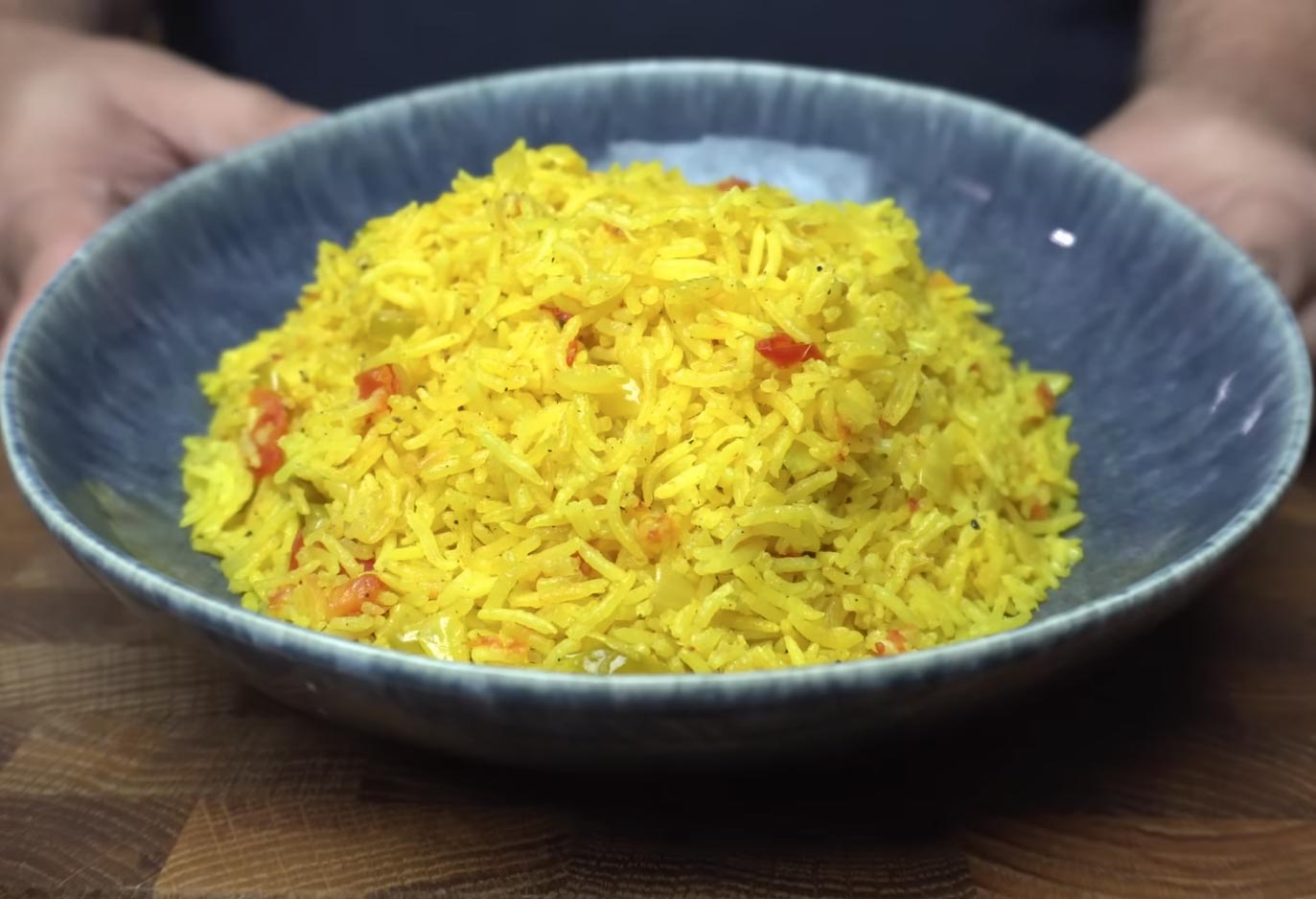Can Dogs Eat Yellow Rice
Yes, dogs can eat yellow rice in moderation as long as it does not contain any harmful ingredients. Yellow rice is generally safe for dogs to consume as it is made with ingredients like turmeric and saffron, which are not toxic to dogs.
However, it’s important to note that some dogs may have sensitivities or allergies to certain ingredients in yellow rice, so it’s always a good idea to introduce new foods slowly and in small portions to ensure they don’t have any adverse reactions.
Additionally, it’s crucial to avoid seasoning the yellow rice with harmful spices like garlic or onions, as these can be toxic to dogs. As always, consulting with a veterinarian is recommended before introducing new foods into your dog’s diet.
Related post-
Nutritional Value Of Yellow Rice For Dogs
Yellow rice, a flavorful and colorful dish, can be a healthy addition to your dog’s diet. It is packed with essential nutrients that can provide numerous benefits to your furry friend. Yellow rice is mainly composed of rice, turmeric, and other spices, which contribute to its vibrant color and distinct flavor.
| Components of Yellow Rice | Benefits of Yellow Rice for Dogs |
|---|---|
| 1. Rice: A source of carbohydrates for energy 2. Turmeric: Contains curcumin, which has anti-inflammatory properties 3. Spices: Rich in antioxidants and can aid digestion | 1. Provides essential energy for everyday activities 2. Helps reduce inflammation and joint pain 3. Supports a healthy digestion process 4. Boosts the immune system with its antioxidant properties |
The carbohydrates from rice can fuel your dog’s activities, while turmeric’s anti-inflammatory properties may help alleviate joint pain and inflammation. The spices in yellow rice contribute antioxidants that support a healthy digestion process and boost the immune system. However, it’s important to note that yellow rice should be served in moderation and should not replace a balanced diet. Always consult with your veterinarian before introducing any new food items to your dog’s diet to ensure it suits their individual needs and health conditions.

Health Risks Of Feeding Yellow Rice To Dogs
Feeding yellow rice to dogs can pose several health risks. One of the risks is that dogs may develop allergies and sensitivities to the ingredients in the rice. Just like humans, dogs can have food allergies that can manifest as skin irritations, digestive problems, or even respiratory issues.
Another health risk is the potential for digestive issues. Yellow rice contains spices and seasonings that may not agree with a dog’s sensitive digestive system. This can lead to upset stomach, diarrhea, or even vomiting.
Furthermore, the sodium content in yellow rice can be problematic for dogs, especially those with underlying kidney issues. Too much sodium can put strain on a dog’s kidneys and potentially worsen kidney health.
Overall, while the occasional small amount of yellow rice may not be harmful to most dogs, it is important to be cautious and monitor for any adverse reactions or digestive issues that may occur. It is always recommended to consult with a veterinarian before introducing any new food into a dog’s diet.
How To Safely Feed Yellow Rice To Dogs
Feeding yellow rice to your dog can be a flavorful treat, but it’s important to ensure their safety and well-being. Quantity management is key when introducing this dish to your furry friend. Start by giving small portions of yellow rice and observing how your dog reacts to it. Monitor their digestion and observe any changes in their stool or behavior. If your dog shows signs of discomfort or an upset stomach, it may be best to discontinue feeding yellow rice.
When preparing yellow rice for your dog, it’s necessary to be cautious about the ingredients you use. Avoid adding any spices or seasonings that may be harmful or irritating to dogs. Stick to plain, cooked yellow rice without any added ingredients or flavors. This ensures that your dog gets the benefits of yellow rice without any potential harm.
Remember that yellow rice should only be an occasional treat and not a staple of your dog’s diet. While it can be a delicious addition to their meals, it should never replace their regular, balanced canine diet. By practicing moderation and closely monitoring your dog’s reaction to yellow rice, you can safely introduce this tasty dish into their culinary repertoire.
Frequently Asked Questions For Can Dogs Eat Yellow Rice
Can Dogs Eat Yellow Rice?
Yes, dogs can eat yellow rice, but it should be given in moderation and without any seasoning or spices. Plain, cooked yellow rice can be a beneficial addition to a dog’s diet as it provides carbohydrates and some essential nutrients.
However, it should not be a substitute for a balanced canine diet.
Is Turmeric In Yellow Rice Safe For Dogs?
While turmeric is generally safe for dogs, the amount present in yellow rice is usually minimal and unlikely to cause any harm. In fact, turmeric has potential health benefits for dogs, including anti-inflammatory properties. However, it’s important to consult with your veterinarian before introducing any new foods, including yellow rice, into your dog’s diet.
Can Yellow Rice Cause Digestive Issues In Dogs?
Yellow rice, by itself, is unlikely to cause digestive issues in dogs. However, if the rice is seasoned or contains other ingredients like onions or garlic, it can potentially upset a dog’s stomach. It’s best to feed your dog plain, cooked yellow rice in small portions and monitor for any signs of digestive distress, such as vomiting or diarrhea.
Conclusion
To sum up, yellow rice can be a tasty addition to your dog’s diet, but it should be given in moderation. While it provides essential nutrients and offers a flavorful alternative to regular dog food, some ingredients in yellow rice may not agree with every dog’s digestive system.
Always consult with your veterinarian before introducing any new food to your furry friend’s diet. Remember, their health and well-being should always come first!
